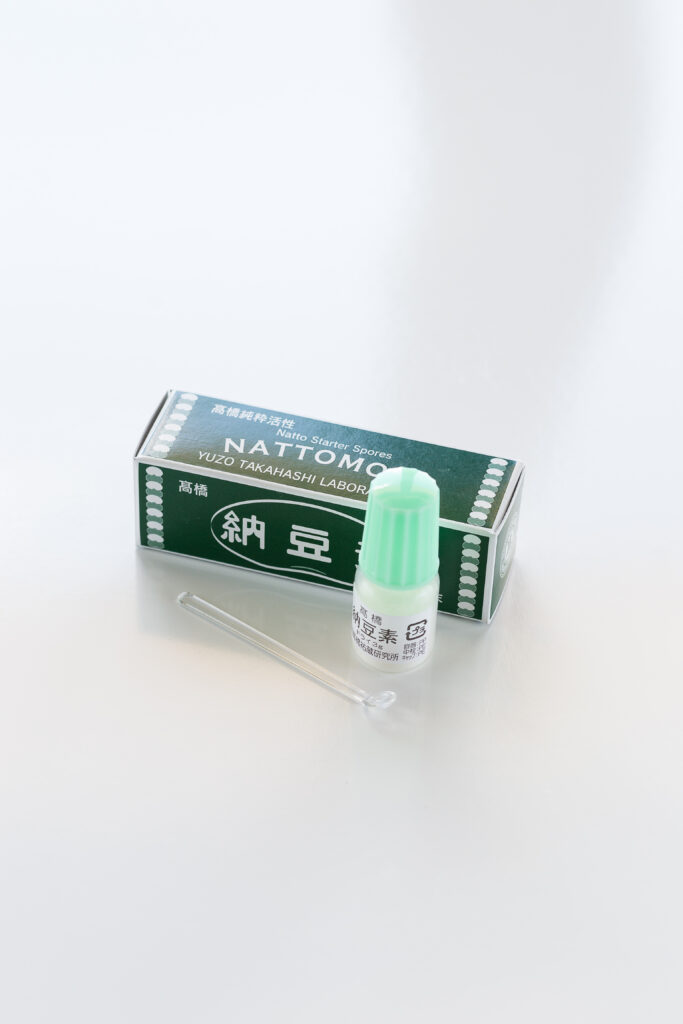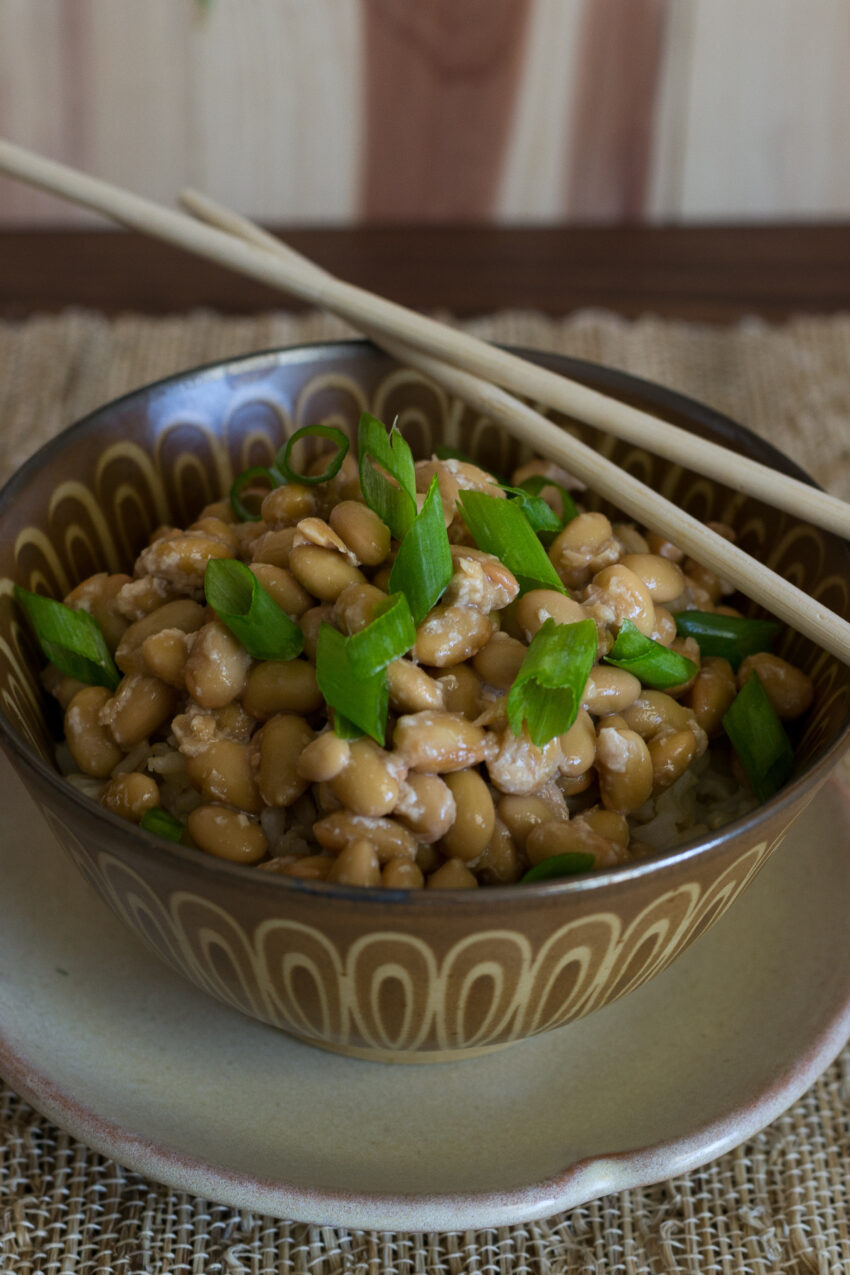by Bluestem
I published a version of this post about making natto (fermented soybeans) on my website in 2015 under the title Adventures in Fermentation. It has relevance today (no) thanks to the spike proteins introduced via the bioweapons masquerading as vaccines that were deployed in early 2021. Recently, Dr. Peter McCullough suggested the use (see also here) of nattokinase supplements to detox the spike proteins from the bodies of those who have taken the jabs. Those of us who resisted taking the fake vaxx are also concerned about the transmission or “shedding” that may occur by being in close proximity to the vaxxed. Below I discuss making your own fermented soybeans that are rich with nattokinase. Be forewarned — natto is not for the delicate of nose. If making your own doesn’t appeal, but you want the heart-healthy benefits it offers, natto is available in the frozen food section at most Asian markets. For those who prefer their nattokinase in a less pungent or bean-y form, choose a high-quality supplement. (See The Wellness Company Spike Support Formula. Not a paid promotion, just a reference.)
— Bluestem
_______________________________
In the 9th grade, for a reason I can no longer recall, I thought it would be a good idea to join the marching band. Me and my poorly-played cornet (imagine a stubby trumpet) had dreams of lock-stepping in glorious union with my fellow bandmates during half-time at football games. Imagine the clear fall nights with a slight nip in the air; the warm coriander smell of steaming hotdogs over at the concession stand, the neon green blaze of the field under bright, buzzing lights. Thrilling, no? And there I would be, amidst it all, wearing a tall, plumed hat and a shapeless blue and red wool tunic and flared floodwater pants (with stripes), tooting out the heroic, if overwrought, Fight Song when the team needed rallying. Cheering lustily from the lower bleachers when they scored a touchdown or field goal. Cheering on our Wolverines.
But before I could take my rightful place amongst the shiny golden trumpets and trombones, I had to endure Band Camp: one long, hot weekend in August in a sleepy town named Hiram. Band Camp was known to be brutal on freshmen. But not for the long, hot days learning how to decipher the choreography of marching while reading music while playing an instrument. The climax of Band Camp was when more senior bandmates had free reign during one terrifying afternoon. Tapping into into their inner sadist was not only condoned, but encouraged. For a shy, myopic, brace-faced girl, there wasn’t a scarier proposition. Turns out the hazing really wasn’t too bad. The taunts bruised the ego, the yelling was annoying, the baked beans that were poured into our hair and dripped down our necks and backs felt disgusting. But even the honey drying and sticking to the sun-burned backs of our knees, though uncomfortable, was endurable. Then there was the limburger cheese. It broke many a freshman’s will. Big gobs of the stinky stuff were smeared under and into our nostrils. There was no avoiding the rank, dank, moldy, musty stench of it. Even now on certain August afternoons when the sun is slanting just right through the trees, and the cicadas scratch out their tuneless drone, I can summon up that smell.
Which brings me – finally – to natto. The odor of natto is one of those things that brings back that long ago late summer day as the sun beat down, drying and cracking the smears of limburger on my upper lip.
 So what the heck is natto? Well, you take dried soybeans, cook them, sprinkle them with a tiny amount of magical white powder, let the mixture sit for 24 hours and – voila! – natto! In Japan, natto is often served for breakfast. It’s loaded with protein and it serves up vitamin E and B2. But its real draw is vitamin K – a vitamin also found in greens, broccoli, Brussels sprouts, and blueberries, among other foods. Vitamin K is important to keep blood clotting normally and for regulating calcium. It also may be a benefit for those with heart disease by clearing plaque from arteries.
So what the heck is natto? Well, you take dried soybeans, cook them, sprinkle them with a tiny amount of magical white powder, let the mixture sit for 24 hours and – voila! – natto! In Japan, natto is often served for breakfast. It’s loaded with protein and it serves up vitamin E and B2. But its real draw is vitamin K – a vitamin also found in greens, broccoli, Brussels sprouts, and blueberries, among other foods. Vitamin K is important to keep blood clotting normally and for regulating calcium. It also may be a benefit for those with heart disease by clearing plaque from arteries.
One other little thing you should know about natto. It’s slimy as heck. Slug-trail kind of slimy. Three-year old kid-with-a-cold kind of slimy. Yum yum! I can’t tolerate the stuff, but my husband enjoys it topped with scallions and a little soy sauce.
In the unlikely event that this post hasn’t completely thrown you off of sampling natto and you want to try your hand at making some at home, read on for general directions. For more specific recipes, go here or here.
You’re going to need a few things:
- dried soybeans
- natto spores (I purchased mine here.)
- cheesecloth
- several oven-safe glass/ceramic dishes
- an oven (or other spot) capable of sustaining a 100-103F temperature for 24 hours
- metal spoon, metal tongs, strainer
 Number one most important thing to know before embarking on your own natto adventure is making sure the dishes, utensils, cheesecloth, and your hands are as clean as possible. I sterilized everything (even the cheesecloth, but not my hands… simple washing will do) in boiling water for 5-10 minutes. The temperature that encourages the good spores to grow is also ideal for bad spores to grow. So – you want to start out as clean as you can.
Number one most important thing to know before embarking on your own natto adventure is making sure the dishes, utensils, cheesecloth, and your hands are as clean as possible. I sterilized everything (even the cheesecloth, but not my hands… simple washing will do) in boiling water for 5-10 minutes. The temperature that encourages the good spores to grow is also ideal for bad spores to grow. So – you want to start out as clean as you can.
Soak the soybeans overnight, rinse and drain. Then cook the soybeans until soft. I use a pressure cooker and it takes about 20 minutes. It’ll take longer on the stovetop.
While the beans are still warm and after the utensils and bowls have been sterilized, mix some of the natto spores with some sterilized water and then pour this mixture over the beans. Stir well but gently because the beans should be very soft and will fall apart. Divide the mixture between dishes (you want a fairly thin layer of beans, not a big mass of them in one container), cover with cheesecloth and then with a lid or tightly with foil. Place the dishes where a temperature range of between 100-103F can be maintained. This works for me in my oven off, but with the light on. Turns out my oven stays between 100-102F if the light is on. I also tried a batch in my dehydrator. This worked pretty well, too, but some of the beans dried out just a bit. Not a big deal because they later plumped back up. Just something to keep in mind.
After 24 hours at this temperature, the transformation is…interesting. Place the beans (still in their respective dishes) in the refrigerator overnight. After that, your beans are ready to eat! Freeze in smaller portions for later consumption.
_______________________________
Find more from Bluestem on her blog: Unrefined Vegan
and in her books: The 160: The Essential Elements of an Oklahoma Ranch and Remains: Evidence of Life & Death on the Prairie.

